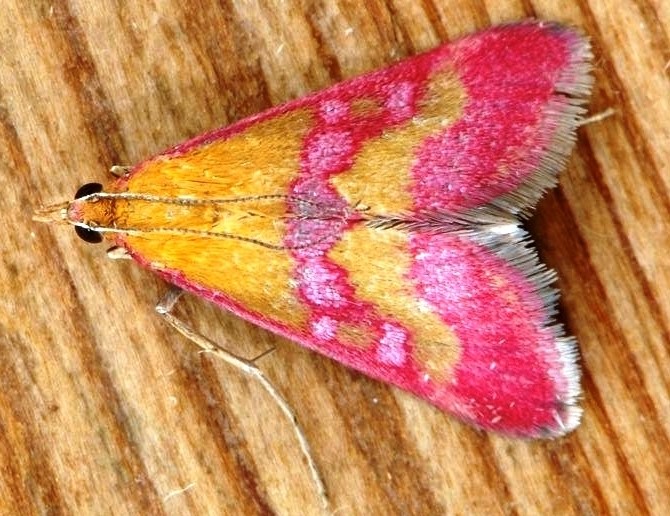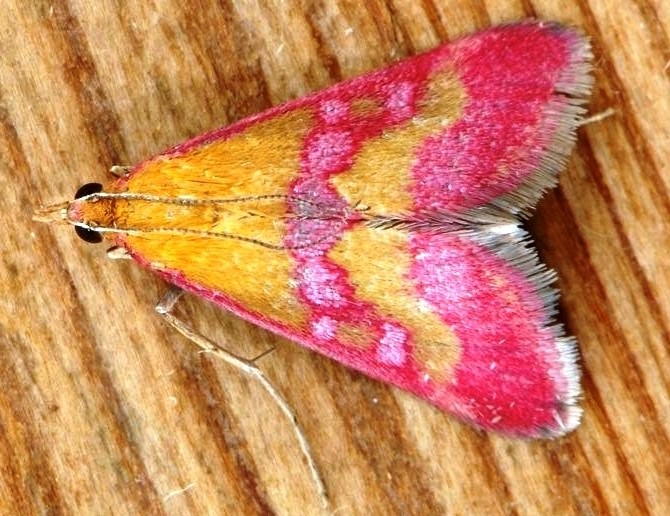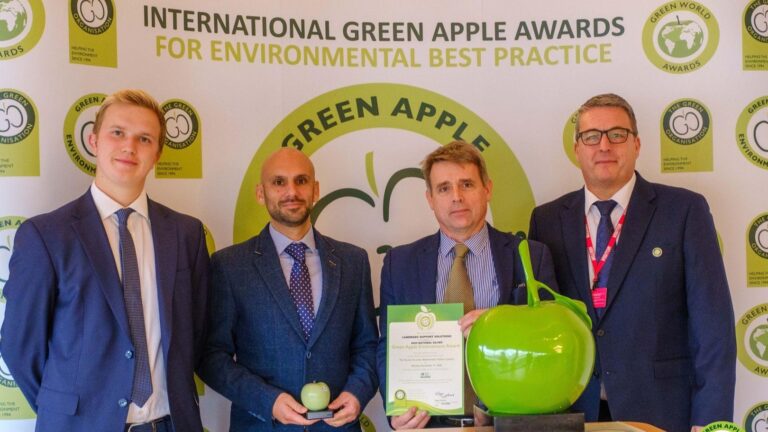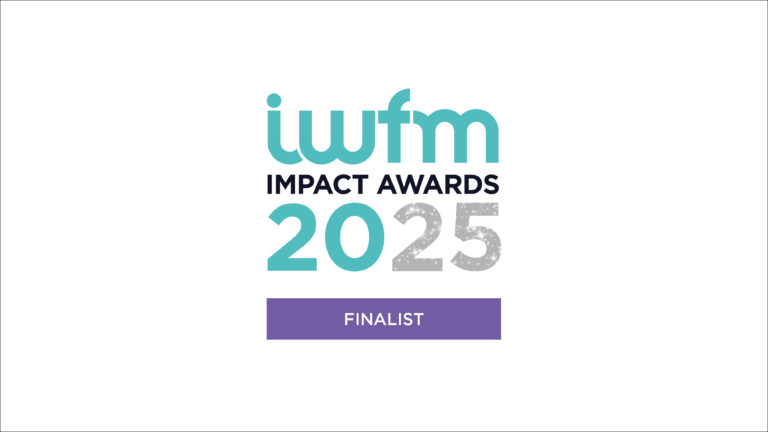Landmarc’s Sustainability Manager, Amanda William talks on how nature is doing and the positive work that is undertaken across the UK military training estate to conserve some of our most valuable habitats and landscapes.
The report, released on 3 October following consultation with a wide range of conservation and research organisations, shows that the UK’s wildlife is in a state of decline. Some 15% of wildlife species are under threat from extinction, which includes 26% of mammal species like the Wild Cat and Greater Mouse-Eared Bat. There has been a 13% decline in average species abundance across all wildlife studied and 53% of species are undergoing rapid change. Butterflies and moths have been particularly hard hit, with numbers of butterflies down 17% and moths down 25%.

Pictured above: The Scarce Crimson and Gold butterfly [Crown Copyright/MOD2019]
The causes are complex and include changes in the way the nation manages land for agriculture, urbanisation and development, the introduction of invasive species, the ongoing effects of climate change and various forms of pollution, but there is still hope of reversing these devastating losses.
There have been an increase of 26% in species and 33% have shown little change over almost 50 years of monitoring. Some species such as Bitterns and the Large Blue butterfly have been saved through the concerted efforts of organisations and individuals, showing that investment in conservation initiatives works. Public support for conservation continues to grow, with non government organisation expenditure up by 26% since 2010/11. Time donated by volunteers, such as the opportunities provided through the Landmarc ‘Be The Difference’ Volunteering Programme, has also increased by 40% since 2000.
Conservation on the military training estate
The team at Landmarc is in the privileged position of looking after 190,000 hectares of some of the most valuable habitats and landscapes in Great Britain, in partnership with DIO, including over 40,000 hectares of National Park and 70,000 hectares of nature conservation sites. This land is largely unaffected by development or intensive agriculture, meaning that the military training estate could be considered as one of the last bastions of habitat for numerous protected species.
Salisbury Plain, for example, provides an excellent environment for the mysterious fairy shrimp, a tiny translucent crustacean that occupies temporary pools. These are created in abundance on the training estate as the tracks of military vehicles leave a complex system of these pools as well as transporting fairy shrimp eggs between them. Also on Salisbury Plain, recent ‘no mow’ trials during the summer months at Westdown Camp have encouraged an increase in pollinating insects flourishing in the pollinator-friendly habitats that quickly developed, as well as a variety of herbs, flowers and shrubs.
Only last month, the rare Strandline beetle was found at Pembrey Sands in Wales during a litter pick, and sites on the Lincolnshire and Pembrokeshire coast are important breeding grounds for both the grey seal and the common seal. Sightings of pine martins, mainly found in Scotland, can also be seen as far south as Otterburn Training Area in Northumberland.

Pictured above: Strandline beetles located at Pembrey Sands [Crown Copyright/MOD2019]
Each year Landmarc teams work with colleagues in DIO and a range of other stakeholders on an exciting range of wildlife conservation projects, with partnership working delivering inspiring results.
Recent examples include:
- The creation of hibernation mounds, or hibernaculum to protect reptiles and amphibians over the winter months.
- Wood pasture restoration work to improve the condition of Sites of Special Scientific Interest.
- Protecting little tern chicks during the breeding season.
- Countless other tasks under the MOD Countryside Stewardship Fund programme.
It is huge credit to our regional teams and rural colleagues, colleagues in DIO, and a wide range of other stakeholders who work together to make this happen.
Volunteer your time
It’s never too late to make a difference, so if you have some time on your hands why not volunteer for a conservation project near you? There are lots of opportunities to get involved such as working with citizen science to help with the Mammal Society’s Walk this Water Way survey, joining your local wildlife trust, reducing your carbon footprint and single-use plastic consumption, and encouraging more wildlife friendly gardening. The loss of nature affects us all so we must work together to make the changes that will deliver tangible benefits for both our wildlife and our future generations.




